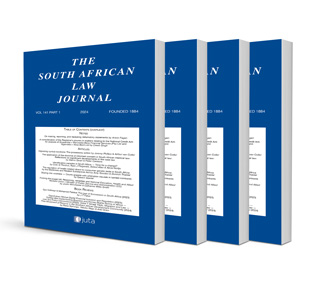
Clearing the CRISPR patent landscape: Towards a solution for South Africa
Authors: Meshandren Naidoo & Donrich W Thaldar
ISSN: 1996-2177
Affiliations: Doctoral Fellow, University of KwaZulu-Natal; Associate Professor, University of KwaZulu-Natal
Source: South African Law Journal, Volume 139 Issue 2, p. 365-406
https://doi.org/10.47348/SALJ/v139/i2a6
Abstract
Patenting activity regarding new CRISPR (Clustered Regularly Interspaced Short Palindromic Repeats) genome editing technology has mushroomed to create a vast and complex patent landscape. However, because of South Africa’s current depository patent system, the South African CRISPR patent landscape contains foundational patents with overlapping claims, as highlighted by the ongoing litigation in the United States between the Broad Institute and the University of California. Both these parties were granted four patents in South Africa. Also, the South African landscape may contain multiple low-quality patents that have the potential to obstruct scientific research in South Africa. The solution in the South African context is threefold, but requires that the Intellectual Property Policy of South Africa: Phase I must first be operationalised to: (a) prioritise CRISPR patent applications for formal examination and substantive search and examination; (b) provide sufficient resources for extracurial patent opposition proceedings regarding all CRISPR patent applications and granted patents; and (c) create certainty by developing an obviousness standard with well-defined parameters. Although CRISPR is not yet advanced enough to fall within the class of life-saving technologies in the short-term, CRISPR may become critical in the treatment and eradication of priority diseases such as HIV/AIDS and tuberculosis. Accordingly, prioritising CRISPR-related patent applications serves the public interest in access to healthcare. By using (a), (b) and (c) in tandem, a triple layer of mechanisms will counter the problems of overlapping claims and of lowquality patents, and hence remove these potential obstructions to CRISPR research in South Africa.